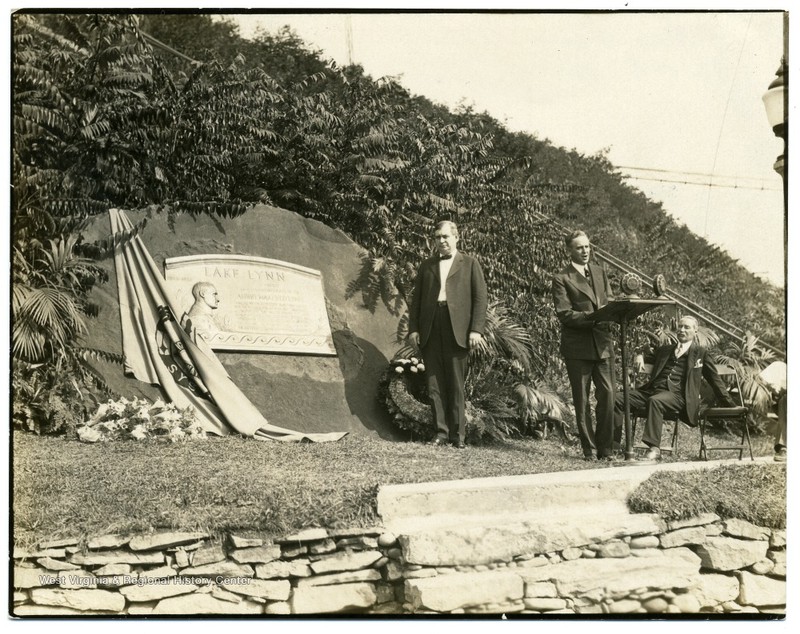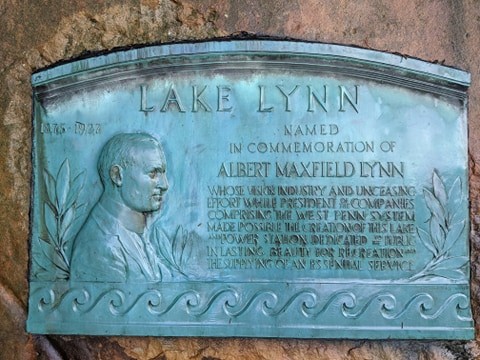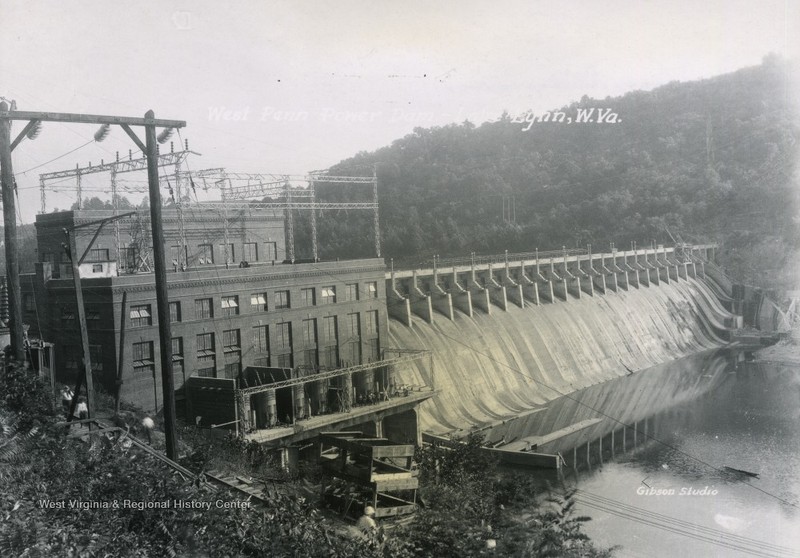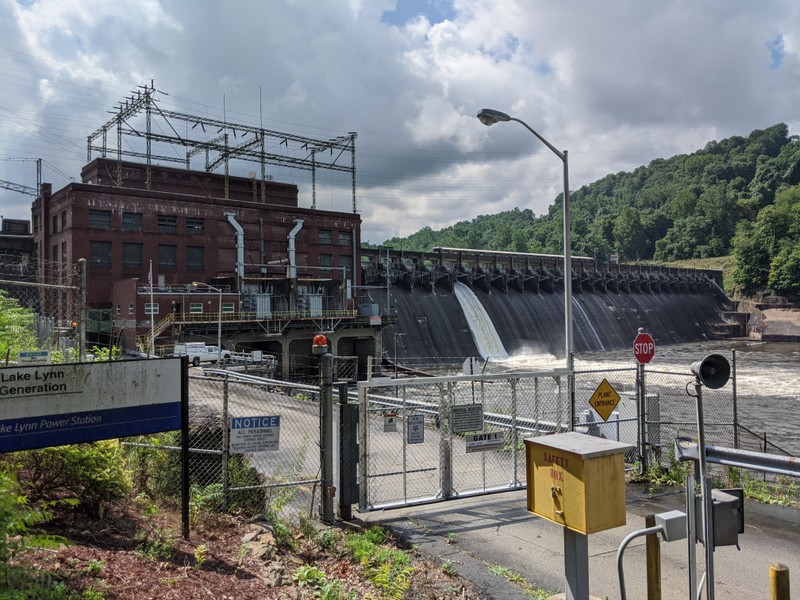Lake Lynn Hydroelectric Power House and Dam
Introduction
Text-to-speech Audio
Images
Lake Lynn dedication, 1927

Lake Lynn dedication marker

Lake Lynn Hydroelectric Power House and Dam

Lake Lynn Hydroelectric Power House and Dam today

Backstory and Context
Text-to-speech Audio
The Lake Lynn Hydroelectric Power House and Dam forms Cheat Lake, a thirteen mile long artificial reservoir. The Lake Lynn Dam was originally known as State Line Dam due to its location just 100 feet south of West Virginia’s border with Pennsylvania. The structures were developed by the West Penn Power Company in the early 1910s. Construction was completed in two phases. The first phase of construction occurred from 1913 to 1914. When World War One began, construction was halted and did not resume until 1925. On December 23rd, 1925, water began flowing over the top of the dam, signifying the full realization of the reservoir. The new lake was named Lake Lynn in honor of West Penn Power’s president from 1917-1927, A. M. Lynn. A plaque commemorating the lake and its namesake was installed in 1927.
The dam is reinforced concrete construction with twenty-six separate steel gates to control waterflow through the electric generating turbines. It stands 135 feet tall and spans just over 1,000 feet. The power house consists of a steel frame with brick inlay. All sides of the structure are covered in industrial style multi-paned windows. The uppermost level of the building features a decorative string course which interrupts the monotony of the brick facades. The building appears to take inspiration from Albert Kahn’s industrial structures. This is reflected in the well lit and airy interior spaces, the utilitarian construction, and relative lack of ornamentation.
Despite the Lake Lynn moniker associated with the power house and dam, if you were to ask a Monongalia county native where Lake Lynn is, you would likely be met with a confused stare. Though the West Penn Power Company did name the lake behind the dam Lake Lynn, locals refused to call it this. Instead, they referred to the new lake as Cheat Lake – the same name as the river that feeds the lake and that once ran where the lake is now. In 1976, the Board on Geographic Names acquiesced to the local community and an official board decision renamed the lake to Cheat Lake.
The Lake Lynn Hydroelectric Power House and Dam is significant for many reasons. It stands as an intact and relatively unmodified example of early twentieth century industrial architecture and engineering. The structure was also an extremely progressive leap in West Virginia’s development. It provided a majority of the electricity to the Morgantown area as well as areas of southwest Pennsylvania. Even today, the Lake Lynn facility is one of only four hydroelectric dams in West Virginia and the only one constructed prior to World War Two. Additionally, the Lake Lynn station has had a large impact on the cultural fabric of Morgantown. Cheat Lake is a popular recreation destination for a variety of aquatic and nature pursuits, and many Morgantown commuters call the Cheat Lake area home. Finally, the dam helps control watershed from the Cheat River into the Monongahela River. This ensures that the Monongahela runs normally during dry summer months. The Lake Lynn Hydroelectric Power House and Dam continues to operate as a holding of Eagle Creek Renewable Energy.
Sources
Feature Detail Report for: Cheat Lake, U. S. Geological Survey. December 31st 1981. Accessed August 3rd 2020. https://geonames.usgs.gov/apex/f?p=GNISPQ:3:::NO::P3_FID:1537226.
Ferris, Steve. FirstEnergy elling hydroelectric plants, including Lake Lynn facility, Greene County Messenger. September 5th 2013. Accessed August 3rd 2020. https://www.heraldstandard.com/gcm/news/local_news/firstenergy-selling-hydroelectric-plants-including-lake-lynn-facility/article_b4b33e16-d297-56e3-bed7-cccff40e5112.html.
Lake Lynn Hydroelectric Power House and Dam, Library of Congress. January 1st 1980. Accessed August 3rd 2020. http://loc.gov/pictures/item/wv0219/.
Palmer, James B., Moltz, Heidi L.N., and Karin R. Bencala. Impact of Anthropogenic Activities on Low Flows in West Virginia. Rockville, MD. 2013.
Schadinger, Stefan et al. Improving Debris Management at Lake Lynn Dam. Hydro Review, vol. 32, no. 3.
West Virginia & Regional History Center
West Virginia & Regional History Center
